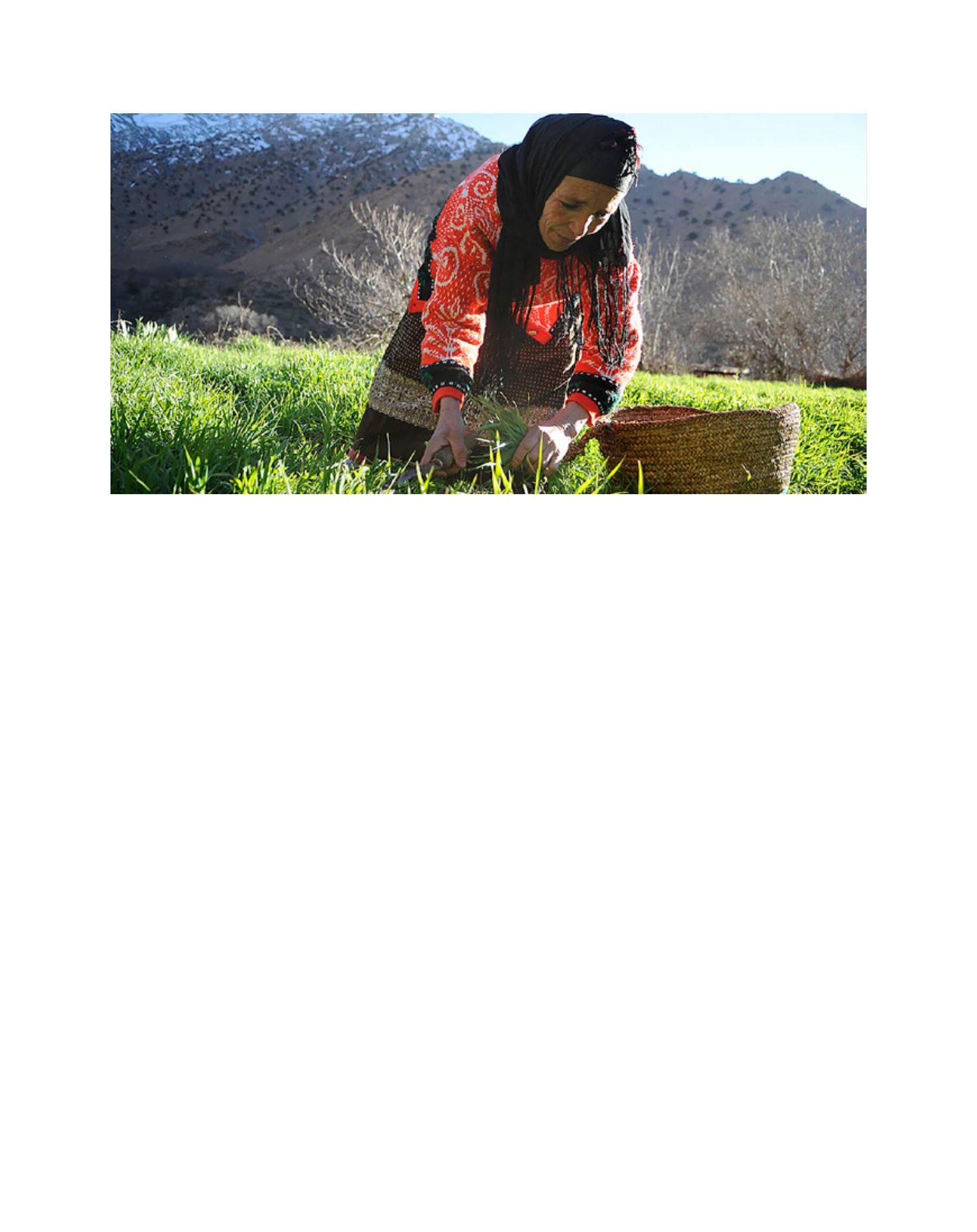

[
] 24
Image: Issam Zerrok
Ms Rokaya, who is responsible for feeding the family, is planting in the high mountains of the Atlas
population also puts immense pressure on political leadership
for high expectations of development to be met.
The inflow of agricultural subsidized products from Israel has
also had adverse impacts on Palestinian family farmer competive-
ness. The World Bank notes that “Palestinian enterprises have
remained hostage to political instability, unresolved conflict, and
continued restrictions on movement, access, and trade.”
16
Economic reform and adjustment
The second major factor impacting family farming in NENA
has been the 35-year period of economic reform. Structural
adjustment programmes have transformed the region’s farmers,
dispossessing many from smallholdings, raising prices for
inputs to unaffordable levels and promoting export-led growth
of largely cash crops for export rather than of staple food crops
for consumption locally. Private sector-led growth has empow-
ered large (and some small) entrepreneurs who have charged
increased prices for essential farming inputs, accelerating rural
social differentiation as smallholders and the near-landless have
been displaced by those with larger landholdings and foreign
investors. Private sector growth has been the mantra of the
international financial institutions (IFIs)
17
and aid agencies and
its central plank has been land tenure reform: the conversion of
state land (and farms) into private property.
In the aftermath of colonialism, many governments tried to
break from the inherited bimodal agricultural system. State-
led agriculture and land reform across the region improved the
livelihoods of many family farmers and, as in the Egyptian case,
gave tenants the rights to land in perpetuity.
18
President Nasser
redistributed one-seventh of the country’s cultivable land from
large landowners to smallholders, tenants and some landless.
High oil prices in the 1970s, however, did not benefit small
farmers except to provide wage income for those who travelled to
the Gulf, Libya and Iraq to work. Investment in agriculture across
the Arabworld fell between the 1970s and 1990s. Privatization and
the sale of state farms accelerated, driven by donor and IFI pres-
sure. In Egypt, Law 96 of 1992 revoked Nasser’s legislation that
had given small farmers rights to lease land in perpetuity, and rents
rose for many families bymore than 400 per cent. Morocco’s green
plan (‘Le Plan Maroc Vert’) in 2008 promoted market-oriented
development to boost poor farmer income. However, it needs
strengthened consultation
19
as well as greater attention to the
complex and integrated pluriactivity of farming and farmers prior-
itizing food chains of fruit and vegetables, olives and olive oil.
20
Elsewhere, in the Maghreb, economic reform and structural
adjustment led to the deterioration of the material and social
conditions of small farmers.
21
In Algeria, prices of fertiliz-
ers and other agricultural inputs after liberalization increased
and their use fell: so too did agricultural output. Between
1983 and 1987, state-led land redistribution stopped, favour-
ing instead private entrepreneurs, and the previously termed
‘socialist agricultural domains’ were dissolved.
Climate change
Climate change and unequal distribution and access to water
is the third major constraint on family farming. Intrariparian
disputes over the use of water and muscular hydropolitics have
impacted on development concerns across borders.
22
The region
as a whole is a relatively low Co2 emitter, but many of its oil
producers have generated carbon-intensive lifestyles. In fact, per
capita emissions in many NENA countries are 60 per cent higher
than the average among developing countries,
23
while resource-
poor Yemen and Djibouti have some of the world’s highest levels
of poverty, as does resource-rich Sudan and South Sudan.
NENA may be the most water-scarce region in the world. Most
of the region’s water is used in agriculture.
24
High dependence
upon rain-fed agriculture makes family farmers, under existing
policy constraints, vulnerable to climate change. More than half of
R
egional
P
erspectives
















